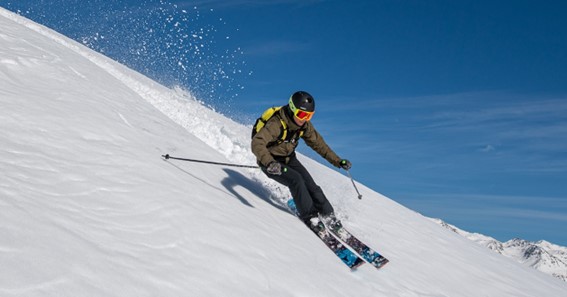Are you curious to know what is buttering snowboard? You have come to the right place as I am going to tell you everything about buttering snowboard in a very simple explanation. Without further discussion let’s begin to know what is buttering snowboard?
Snowboarding is an exhilarating sport that allows riders to glide down slopes, perform tricks, and push the boundaries of their skills. Among the many techniques and styles in snowboarding, one that stands out is buttering. If you’ve ever wondered what buttering is and how it adds a creative flair to snowboarding, this blog post is for you. Join us as we delve into the world of buttering snowboarding, exploring its definition, techniques, and the joy it brings to riders.
What Is Buttering Snowboard?
Buttering is a technique in snowboarding that involves manipulating the board to flex and twist while riding. The name “buttering” comes from the smooth and flowing movements reminiscent of spreading butter on toast. It allows riders to add style, creativity, and fluidity to their runs, showcasing their control and finesse on the slopes.
Techniques And Style:
- Board Flex: Buttering relies on the flex of the snowboard. By applying pressure on specific areas of the board, riders can manipulate its shape and create a buttery smooth motion. Flexibility is an essential characteristic of a board suitable for buttering, as it allows for easier manipulation and smoother transitions.
- Weight Distribution: Proper weight distribution plays a crucial role in buttering. The rider needs to shift their weight onto the nose or tail of the board, depending on the desired move. This distribution of weight enables the board to bend and flex, facilitating spins, presses, and other stylish maneuvers.
- Core Strength and Balance: Buttering requires a combination of core strength and balance. Riders must engage their core muscles to maintain stability while executing various tricks and movements. Developing core strength through regular exercises and training can greatly enhance one’s buttering skills.
- Tricks and Variations: Buttering opens up a wide range of tricks and variations that riders can incorporate into their runs. Some popular buttering tricks include nose presses, tail presses, butterslides, and butter spins. These moves allow riders to showcase their creativity, style, and technical prowess on the slopes.
Benefits Of Buttering:
- Style and Creativity: Buttering adds an element of style and creativity to snowboarding. It allows riders to express their individuality and showcase their unique approach to the sport. By incorporating buttering into their runs, snowboarders can add an artistic flair and make their riding stand out.
- Fluidity and Control: Mastering buttering techniques requires a high level of control and fluidity. By honing these skills, riders can improve their overall snowboarding abilities. The precise weight distribution, balance, and board manipulation involved in buttering contribute to a rider’s control and agility on the slopes.
- Fun and Challenge: Buttering adds an extra layer of fun and challenge to snowboarding. It opens up new possibilities for experimentation and progression. Learning and mastering buttering techniques can provide a fresh and exciting dimension to the sport, keeping riders motivated and engaged.
Conclusion:
Buttering in snowboarding is all about fluidity, style, and control. This technique allows riders to manipulate the flex of their snowboard, showcasing their creativity and finesse on the slopes. By mastering buttering, snowboarders can add a unique flair to their runs, incorporating spins, presses, and other stylish maneuvers. Embrace the joy of buttering and explore the endless possibilities it brings to the world of snowboarding. So, grab your board, hit the slopes, and experience the thrill of buttering as you carve your own path on the mountain.
Gather More Information About such Things By Visiting Mesbrand
FAQ
What Are Snowboarding Tricks Called?
How to Do Snowboard Tricks
- Ollie. An Ollie is probably the first snowboard trick you’ll learn.
- Nollie. The Nollie is basically the opposite of an Ollie.
- Melon. When you catch some snowboarding air, reach down and grab the heel side of the board between your feet.
- Indy.
- Nose Grab.
- 50-50.
- Tail Press.
- Nose Press.
How Do You Not Go Fast On A Snowboard?
- Калоян Николов As soon as you start feeling you are picking up too much speed, turn to your heel or toe edge to stop. Do this on both edges.
- Lucy 👼🏼 As soon as you pick up speed going straight turn either on your toe edge or heel edge to slow you down and keep a good riding speed.
- James. Turning is a big factor here.
Can You Butter On A Stiff Board?
You certainly can butter on a stiff snowboard. Undoubtedly it is easier on a flexible snowboard like a park board but if you only ride mountain then you can still butter your board. You’ll notice the tip and tail don’t come up as much off the snow and that is to be expected with a stiff board.
What Is A 1080 Snowboarding Trick?
A 1080 consists of three full rotations in the air. Chloe Kim was the only woman to ever land back-to-back 1080-degree spins in the halfpipe at the Olympics, helping Kim clinch her gold medal in 2018.
I Have Covered All The Following Queries And Topics In The Above Article
What Is Snowboard Buttering
What Is Buttering On A Snowboard
What Type Of Snowboard Is Good For Buttering
What Is Snowboard Buttering?
What Is Buttering Snowboard
What does it mean to butter a snowboard
What is buttering on a snowboard?
